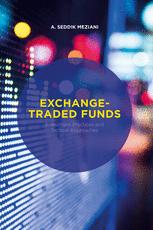

Most ebook files are in PDF format, so you can easily read them using various software such as Foxit Reader or directly on the Google Chrome browser.
Some ebook files are released by publishers in other formats such as .awz, .mobi, .epub, .fb2, etc. You may need to install specific software to read these formats on mobile/PC, such as Calibre.
Please read the tutorial at this link: https://ebookbell.com/faq
We offer FREE conversion to the popular formats you request; however, this may take some time. Therefore, right after payment, please email us, and we will try to provide the service as quickly as possible.
For some exceptional file formats or broken links (if any), please refrain from opening any disputes. Instead, email us first, and we will try to assist within a maximum of 6 hours.
EbookBell Team

4.1
90 reviewsWith Exchange Traded Fund (ETF) sponsors constantly making new types of ETFs available, there is now a variety of ETFs that provide investors with an opportunity to develop diversified investment portfolios. Their sophistication has also grown to include a breed of ETFs that do not passively track the performance of an underlying index. With this assortment of newer ETFs, and more on the way, market strategists are now capable of devising all-ETF portfolios based on a multitude of asset allocation schemes that respond to the need of their clients.
This book provides a comprehensive overview of the changes brought about by ETFs. It describes and analyses recent changes alongside their impact on investment portfolios, and discusses the continuing success of index-based ETFs and the reasons underlying their long-lasting achievements. The book offers an objective discourse on the newly minted smart beta ETFs and some of the issues surrounding them, and provides an overview of how the increasingly widespread ETF-based portfolio hedging strategies are constructed and implemented.
Paying particular attention to the importance of asset allocation and the essential role it plays in portfolio construction, this book explores the role played by ETFs in changing investors’ attitudes toward home bias, covering both established and emerging frontier markets. The author leverages his extensive background to integrate best professional practices and academic rigor for an increased understanding of the ever-evolving world of ETFs.